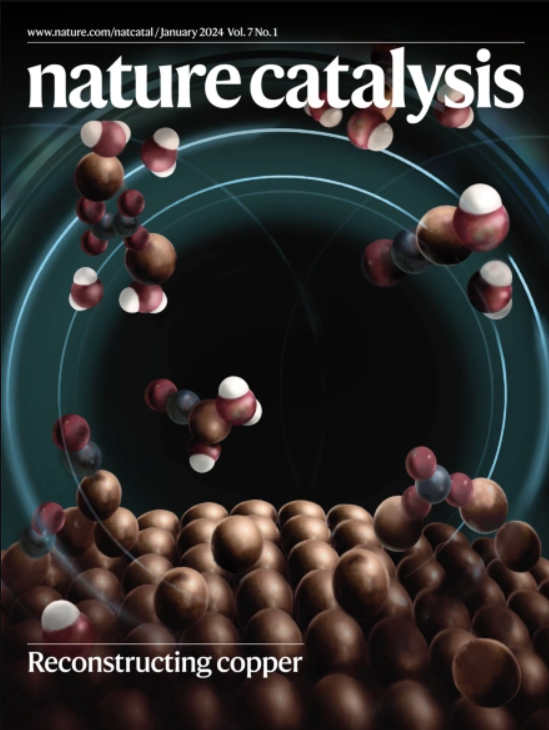Metal vacancies in semiconductor oxides enhance hole mobility for efficient photoelectrochemical water splitting
IF 42.8
1区 化学
Q1 CHEMISTRY, PHYSICAL
引用次数: 0
Abstract
Achieving efficient carrier separation in transition-metal-oxide semiconductors is crucial for their applications in optoelectronic and catalytic devices. However, the substantial disparity in mobility between holes and electrons heavily limits device performance. Here we develop a general strategy for enhancing hole mobility via reducing their effective mass through metal vacancy (VM) management. The introduction of VM yields remarkable improvements in hole mobility: 430% for WO3, 350% for TiO2 and 270% for Bi2O3. To illustrate the importance of this finding, we applied the VM concept to photoelectrochemical water splitting, where efficient carrier separation is highly coveted. In particular, VM-WO3 achieves a 4.4-fold enhancement in photo-to-current efficiency, yielding a performance of 4.8 mA cm−2 for both small- and large-scale photoelectrodes with exceptional stability for over 120 h. Efficient charge carrier separation is a substantial roadblock to achieving high performance in photoelectrochemical systems based on transition-metal oxides. Here a metal vacancy strategy is used to enhance hole mobility, resulting in general enhancement of photocurrent density in WO3, TiO2 and Bi2O3 photoanodes.


半导体氧化物中的金属空位提高了空穴迁移率,实现了高效的光电化学水分解
在过渡金属氧化物半导体中实现有效的载流子分离对于其在光电和催化器件中的应用至关重要。然而,空穴和电子之间迁移率的巨大差异严重限制了器件的性能。在这里,我们开发了一种通过金属空位(VM)管理减少空穴有效质量来提高空穴迁移率的一般策略。VM的引入显著提高了WO3的空穴迁移率:WO3为430%,TiO2为350%,Bi2O3为270%。为了说明这一发现的重要性,我们将VM概念应用于光电化学水分解,其中高效的载流子分离是非常令人垂涎的。特别是,VM-WO3实现了4.4倍的光电流效率增强,在小型和大型光电极中产生4.8 mA cm−2的性能,并具有超过120小时的卓越稳定性。
本文章由计算机程序翻译,如有差异,请以英文原文为准。
求助全文
约1分钟内获得全文
求助全文
来源期刊

Nature Catalysis
Chemical Engineering-Bioengineering
CiteScore
52.10
自引率
1.10%
发文量
140
期刊介绍:
Nature Catalysis serves as a platform for researchers across chemistry and related fields, focusing on homogeneous catalysis, heterogeneous catalysis, and biocatalysts, encompassing both fundamental and applied studies. With a particular emphasis on advancing sustainable industries and processes, the journal provides comprehensive coverage of catalysis research, appealing to scientists, engineers, and researchers in academia and industry.
Maintaining the high standards of the Nature brand, Nature Catalysis boasts a dedicated team of professional editors, rigorous peer-review processes, and swift publication times, ensuring editorial independence and quality. The journal publishes work spanning heterogeneous catalysis, homogeneous catalysis, and biocatalysis, covering areas such as catalytic synthesis, mechanisms, characterization, computational studies, nanoparticle catalysis, electrocatalysis, photocatalysis, environmental catalysis, asymmetric catalysis, and various forms of organocatalysis.
 求助内容:
求助内容: 应助结果提醒方式:
应助结果提醒方式:


